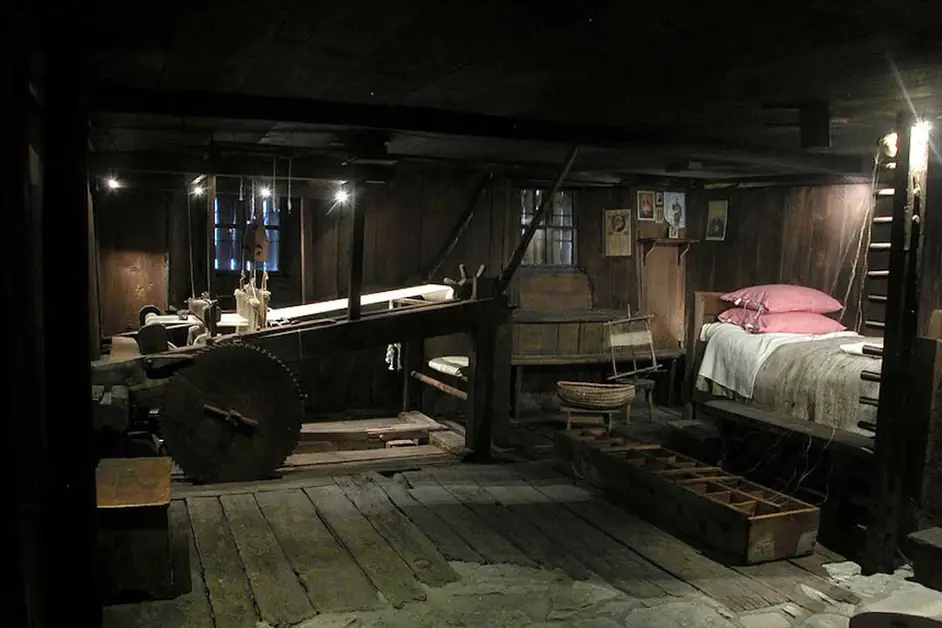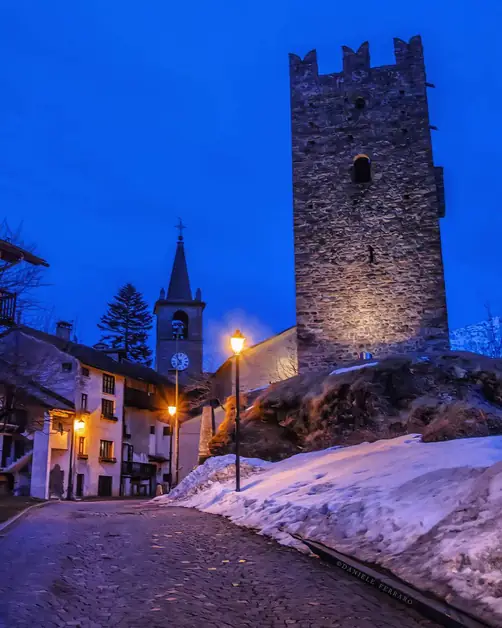Rediscovering the hemp tradition in Champorcher
Hemp in Champorcher is a rediscovered tradition that combines history and sustainability.

Where was hemp cultivated in Aosta Valley?
Hemp was mainly cultivated in the Chambave area and other locations in the lower Aosta Valley, where the climate and soil were particularly favorable. However, the weaving of the fabric obtained from this plant was considered one of the typical activities of the Champorcher Valley, where the art of spinning and weaving was very widespread.
Why was hemp so important in the past?
In the past, hemp was a valuable plant for many alpine communities. Its robust and fibrous stalks allowed for the production of a durable and resistant natural fiber, ideal for making fabrics, ropes, sacks, and sheets. Hemp was also used for agricultural and artisanal purposes, as it was economical, easy to cultivate, and adaptable to mountain climatic conditions. The hemp fiber also had great symbolic and practical value: it was considered a sign of autonomy and self-sufficiency, as it allowed families to produce everything they needed at home.
How was hemp woven in Champorcher?
The processing of hemp was a long and meticulous process that required manual skills and specific knowledge. After harvesting, the plant's stems were left to macerate in water to separate the fibers from the inner wood, then dried and beaten to obtain thin and flexible filaments. Subsequently, the fiber was spun and transformed into thread, ready to be woven on the looms.
What type of looms were used in the Champorcher Valley?
The traditional looms used in Champorcher were generally made of larch wood, a durable yet lightweight material, perfect for domestic and artisanal use. The connecting cords were made of rope, and the movement of the pedals and levers was entirely manual. These looms produced high-quality fabrics, appreciated throughout the region for their durability and softness. A perfectly preserved loom is still visible in the village of Chardonney, where it testifies to the historical and cultural importance of weaving in the valley. Visiting it allows one to understand how complex and fascinating the work of the weaver was, requiring patience, precision, and a deep knowledge of materials.
Who worked with hemp in Champorcher?
Weaving was primarily a female activity, carried out in homes during the winter months. The women of Champorcher spent long evenings at the loom, producing sheets, towels, tablecloths, and shirts for the family or for trade. The quality of the fabric was such that many products were exchanged or sold in nearby valleys, contributing to the local economy.
Why was hemp weaving so widespread?
The spread of this activity was due to several factors. First of all, hemp grew well even in mountainous areas and did not require special care. Furthermore, weaving represented a way to use winter time productively when agricultural activities were suspended. Finally, hemp fiber was highly valued for its durability and breathability, qualities that made the fabrics ideal for sheets and work clothes.
When and why did hemp processing cease in Champorcher?
Hemp processing gradually ceased during the twentieth century, with the arrival of synthetic fibers and the abandonment of traditional agricultural activities. New consumption habits and the difficulty of keeping artisanal production alive led to the disappearance of looms and the loss of many manual skills. For decades, hemp weaving remained only a memory linked to the past.
How has hemp weaving been revived today?
In recent years, thanks to the interest in natural and sustainable products, hemp weaving has come back to life in Champorcher. The "Lou Dzeut" cooperative, established with the aim of recovering traditional Aosta Valley crafts, has relaunched the production of hemp fabrics using traditional techniques and local materials. Today, it produces sheets, towels, shirts, and tablecloths, all made with hemp fabric from Champorcher.
What does the Lou Dzeut cooperative represent for the community?
The "Lou Dzeut" cooperative is a symbol of rebirth and enhancement of the territory. It brings together artisans and enthusiasts who work together to preserve historical memory and promote a sustainable economy. In addition to production, the cooperative also manages a permanent exhibition and a teaching laboratory where visitors can observe the various stages of hemp processing, from thread to finished fabric.
Is it possible to visit the hemp exhibition in Champorcher?
Yes, the permanent exhibition and laboratory are located in Champorcher and are open to the public year-round, with variable hours depending on the season. Visits allow one to closely observe traditional tools, such as wooden looms and spinning tools, and to understand the cultural value of this ancient art.
Why is hemp weaving still relevant today?
Today, hemp processing represents not only a tradition to be preserved but also a modern response to sustainability and local craftsmanship issues. Hemp fabrics are eco-friendly, hypoallergenic, and biodegradable, as well as being durable and comfortable. In an era where there is a search for a return to quality and nature, the hemp from Champorcher tells a story of balance between past and future.
What can a visitor learn from this tradition?
Those who visit Champorcher and discover the story of hemp can understand how deep the bond is between the community and its land. The cultivation and weaving of hemp represent a concrete example of cultural resilience, capable of uniting different generations in a common project. Today, as in the past, hemp from Champorcher is synonymous with work, creativity, and respect for the alpine nature.

